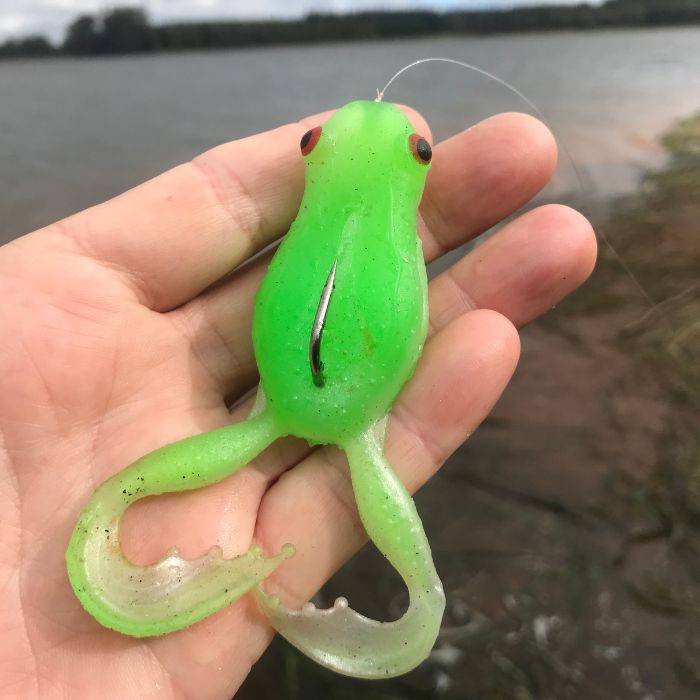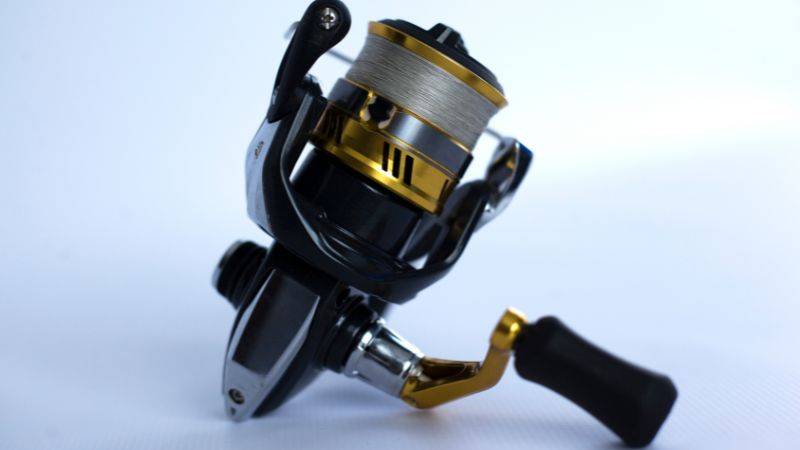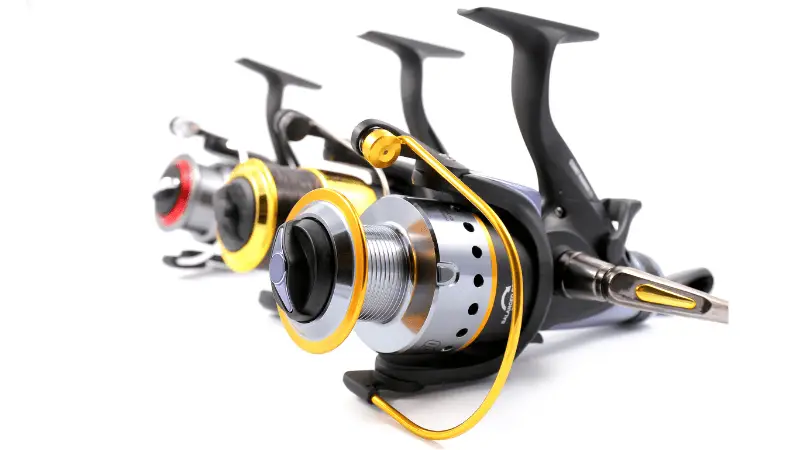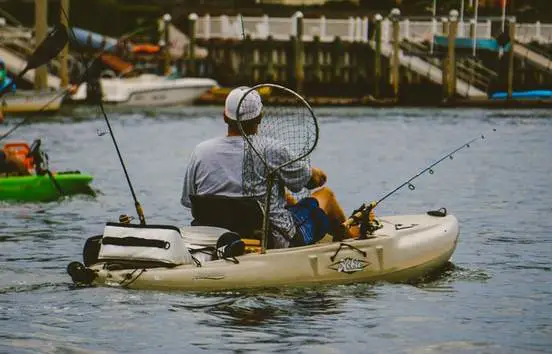
In this article we will cover not only how much weight can a fishing kayak hold, but also the weight capacity of other types of kayaks as well.
We will also go over different types of kayaks and their functions, as this relates to why and how much they are designed to carry.
Below are samples of actual kayak weight limits to give you a closer look at how much weight can a kayak hold:
- Fishing kayaks: 250 to 550 lbs. and higher for the bigger models. This limit varies wisely as the paddling type Hobie fishing kayaks are big in size and can carry more gear then a small short fishing kayak.
- Recreational kayaks: 250 to 300 lbs.
- Touring kayaks: 300 to 350 lbs.
- Sit-on-top kayaks: 325 to 400 lbs.
- Tandem kayaks: 450 to 600 or 700 lbs.
- Inflatable kayaks: 400 to 750 lbs.
Fishing kayaks: Kayak fishing today is becoming popular. More kayaks are made with features needed for fishing, like fishing pole holders and pontoon stabilizers.
The hulls of fishing kayaks are flatter, for stability. They provide a stable platform so you can easily cast your line. Fishing kayaks also have pedal-powered water wheels so you can hold your fishing pole. This kayak can be either a sit-on or sit-in type.
Fishing kayaks are shorter and sometimes lighter than traditional kayaks.
You can more easily maneuver them in and out of the water. Also, most are easy to store on a car rack. And in most models, you can keep your catch in storage space. Most fishing kayaks are ideal for short day trips.
Why Weight Capacity Of A Fishing Kayak Is Important
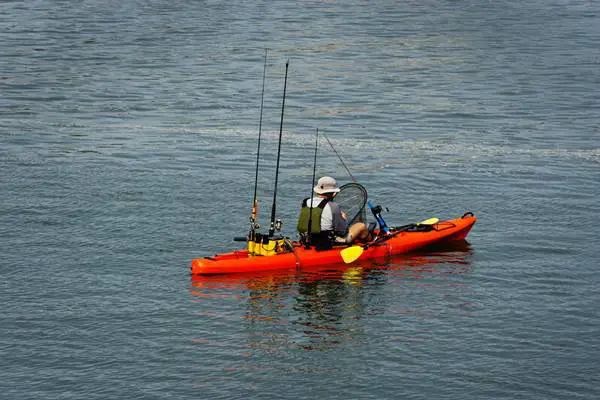
Kayaking has always been a thrilling, adventurous sport even when you paddle on a mild river. The rush of the current, that thrill that comes from battling that force makes you feel like you’re on an adventure worthy of a lifetime. You, as the kayaker face many challenges, a major one is balance and buoyancy.
The weight capacity of a fishing kayak is an important factor in its stability as well.
In a kayak, you’re vulnerable to the run of its watercourse, to nature’s elements such as wind, rain, to unexpected waves in the water route. It’s important that you know exactly how much weight can a fishing kayak hold in order to ride safely and efficiently through the waters.
Not only that, but to carry all the fishing tackle and gear that the kayak angler takes, the weight can add up. So it is good to know the weight capacity of the fishing kayak.
For a list of kayak fishing needed, click on – How To Outfit A Kayak For Fishing
The clothing the angler can wear and have stored dry can also add up in total weight, for more information on kayak fishing clothing to keep you warm, visit – What To Wear Kayak Fishing
What are the different types of Kayaks?
There are two main categories of kayaks, flatwater kayaks and whitewater kayaks.
Flat Water Kayaks travel over flat and level watercourses, like rivers, lakes, streams and areas that are safe from wind and strong waves.
Types of flatwater kayaks:
- Sit-on-top kayaks: are wider than most kayaks so they have good primary stability. There is no closed cockpit. You can easily get into the sit-on-top kayak. And it usually gives you a wet ride since you often get wet from splashes. You can do fishing on these kayaks because you can easily access all of your gear.
- A sit-in kayak has a cockpit, where you put your legs. It has a spray skirt to stop water from entering from the top. Sit-in kayaks are used in trips over cold waters. They keep you warm, keep your legs dry and out of the wind.
- Recreational kayaks: are easy to steer and have a wide hull for stability. They have a large, closed cockpit, where the paddler sits, with an opening large enough to fit you and a small child. There’s a small area for you to put essential items. The average length is 10 feet or less, shorter than touring kayaks. And less expensive than touring kayaks. You can store them and transport them more easily because they are shorter. With less speed than touring kayaks, they do not track as well. You can ride them on lakes, streams, saltwater areas that are protected from wind and waves. These are used for family trips.
- Touring kayaks: are long and narrow. It has a narrow beam that enables it to move fast and track straight over long distances. You can take long water trips across large bodies of water. Many touring kayaks have a rudder to help them turn or steer, compensating for tidal movement or wind. There is a less physical strain on the paddler. Touring kayaks are from 12 to 24 feet long. They have small cockpits with a thigh brace so that when a kayak rolls over, you can use his hips and thighs to roll back, upright. They have a large storage capacity, especially for equipment. There is less possibility of flooding of the kayak because of the internal bulkheads and a spray deck. It is difficult to store and transport touring kayaks because of the length. Touring kayaks are expensive. Used kayaks cost $800 and new ones cost $1200 or more.
- Tandem kayaks: can fit two or more people. You can take younger or less experienced kayakers out on the water, so they can practice their kayaking skills. Beginners can gain experience. And children can be introduced to kayaking, under your supervision. There is more storage space, for long trips. The kayak type can be a Sit-on or sit-in. Tandem kayaks weigh from 75 to 100 lbs. So you’ll need help to get a tandem kayak into the water or to load it on a car rack.
- Inflatable kayaks: are kayaks that are inflated and deflated before and after use. They have gained popularity with technological advancements. They can perform like hardshell kayaks. Inflatable kayaks are lighter. You can easily carry them and pack them into your backpack. The quality inflatable kayaks are made with drop-stitch technology, i.e. when you inflate the board, small fibers in it interlock to create a tough surface. The outer layer of inflatable kayaks is made from PVC and durable rubber.
Whitewater kayaks:
The whitewater kayaks are designed to move down rapid, rocky watercourses. They are normally 4 to 10 feet long, with small cockpit openings. The material of these kayaks is made of durable rotomolded plastics. These come only as Sit-in type.
Whitewater kayaks are categorized into two major types: playboats and creek boats
- Playboats: are the shortest of the whitewater kayaks. They are agile with hulls that do not damage easily. These playboats have a scooped bow and blunt stem, which makes them easy to maneuver. They navigate well in rocky and steep waters. Speed is gained when traveling through rapids so these playboats are used in a sport called “rodeo boating” showing technical tricks. Their scooped bow, however, makes them slow in open water.
- Creek boats: are longer, with more volume than the playboat kayak. You navigate the creek boats through narrow, low-volume water routes. The creek boats are stable and buoyant so they are more multi-purpose. These can navigate larger rivers. The creek boats have more volume so they can navigate flat watercourses. They can also travel through rapids due to their stability.
Weight Capacity of Kayaks
Why is it important for you to know how much weight can a kayak hold?
The weight capacity is assigned by the manufacturer who knows the limit of its weight and differs according to the type of kayak.
While there is no standard weight capacity declared by the industry, the weight limit is determined by the width, length, and water displacement volume of a kayak.
To ensure safety and to enable the paddler to easily maneuver the kayak, the rule is to have the paddler’s weight and the weight of the gear reach 70 percent of the declared weight capacity of the kayak.
Knowing the kayak’s weight limit, you know how much weight can a kayak hold, which includes both gear and human weight while remaining afloat. Knowing how much weight can a kayak hold before buying a kayak, you’re is able to control many factors, like preventing water from pouring into the cockpit of a kayak or preventing it from capsizing.
To have a margin of safety, observe the rule that the maximum weight to operate a kayak effectively is two-thirds of the maximum weight capacity declared by the manufacturer.
This rule gives a safety margin as you pack for your kayak for a day trip. And in case you encounter waves, currents, and unexpected turns in the water route.
Length
Recreational kayaks generally measure less than 12 feet, the most common length being 10 feet. Touring kayaks are 12 to 16 feet long. And ocean and sea kayaks measure up to 23 feet. The longer kayaks have a bigger weight capacity. They are faster, they float better, track in a more straightforward way, and you spend less effort on very long trips along flat rivers and lakes. Whitewater kayaks, on the other hand, are less than 8 feet.
The shorter kayaks are 8 ft. to 12 ft. long. They more easily turn, are easier to transport, and cost less.
The most popular kayaks are recreational kayaks, normally around 10 feet long.
Kayak Stability with too much weight
When a fishing kayak is at its maximum weight capacity, these problems arise.
The kayak stays afloat but it drops very low in the water. And it becomes less stable.
You’ll have difficulty paddling. You can also will get wet.
And if your kayak is overloaded, and you’re using a cockpit-style kayak, every stroke you make, will splash water into the kayak. This adds to the weight. If the kayak is too heavy, and you’re using a sit-on kayak, your kayak will be mostly underwater.
In case you come across waves or meet an approaching boat, water will go inside your kayak through the scupper holes. Scupper holes are molded in the design of the kayak to drain water from the deck so water will not collect in the cockpit where the paddler is. If your load is heavy, you need to have scupper plugs inserted to prevent water from going in your kayak, from the bottom area.
Kayak will become less maneuverable
When a kayak is maneuverable, it responds quickly to your paddle strokes for turning.
A heavy fishing kayak is more difficult to turn and is less maneuverable.
A heavy kayak floats lower in the water, so you have to displace more water in order to move. Another problem is you need a lot of energy so you can accelerate from a stopped position.
One option is to add a rudder to make maneuvering easier. You can use foot braces attached to the rudder at the end of the kayak. This enables you to steer from side to side. However, having excess weight remains a major factor in lessening the maneuverability of the kayak.
Always bear in mind how much weight can a kayak hold when loading your fishing gear onto it.
(Hopefully you have to factor in the weight of the fish you catch as well.)
Weight of the actual kayak
The typical weight of an average kayak is 63.2 pounds. Most kayaks weigh from 20 pounds to more than 100 pounds. The kayak weight depends on your use of it, including other factors.
The different types of kayaks have their standard weights.
- The recreational kayak weighs 35 pounds, as a single kayak. A tandem recreational kayak weighs 65 pounds.
- A single kayak weighs 35 pounds, on average. Typical single kayaks weigh 30 to 50 pounds, determined by building materials and accessories.
- A typical tandem kayak weighs 65 pounds, on average. Lighter tandem kayaks weigh 50 pounds. Heavier tandem kayaks weigh 75 pounds.
- Fishing kayaks that are lighter, budget-friendly weigh 35 pounds. Heavier, more costly and feature-rich fishing kayaks can weigh up to 225 pounds.
- An Inflatable kayak weighs about 30 pounds. Less expensive inflatable kayaks weigh under 20 pounds. The more durable inflatable kayaks weigh over 50 pounds. Determining the cost is the construction, quality of materials used, and size of the inflatable kayak.
For more information on the weight of a fishing kayak, visit – How Much Does A Fishing Kayak Weigh?
How to increase the weight capacity of your fishing kayak
There are ways to increase your kayak’s weight capacity through buoyancy. Buoyancy keeps your kayak stable and floating, in spite of the weight on board.
Get extra kayaking gear:
- A. Install outriggers. These are long arms with a device to keep the kayak afloat and add to its buoyancy, make it more stable on the water and lessen the possibility of flipping over. These are attached to the kayak and reach into the water. Consider how much weight a kayak can hold, if you’re putting outriggers that may exceed the limit and affect the kayak’s stability.
- B. Use lightweight float bags that you inflate with air, then fill with water. These are durable, nylon-like fabrics that are water-resistant. They are triangular in shape and are put into storage areas at the far end of a kayak. These add to the buoyancy of the kayak. Some kayakers even fill the float bags with helium. Note some limitations though. For example, putting float bags into sit-on-top fishing kayaks makes the kayak less stable. Plus you must consider the weight of other gear you’ve put, and note how much weight a kayak can hold.
- C. Use Pool Noodles: These are buoyant polyethylene foam, shaped like cylinders. They can be used in place of the float bags and help keep your kayak afloat. From the different pool noodles available, you choose the right type, one that does not absorb water.
Proper paddling using the correct technique: When you paddle your kayak properly, this improves the buoyancy of the kayak. Using the proper paddle strokes, you also lessen arms fatigue, at the same time, you can prevent water from filling the cockpit of your kayak. This is especially important when the kayak carries much weight.
Change the hull of the kayak: The hull of a kayak is the skeletal frame. Its shows the purpose of a kayak.
Fishing kayaks, for example, have a pontoon shape of a hull. This tunnel shape provides stability to the kayak when you stand up to fish. If you want to increase the weight capacity of your kayak, you can rearrange the design of its hull. Be aware of possibly weakening your kayak.
FAQs
Can a 300-pound person kayak?
The person has to check the optimal weight limit and size of the cockpit. See if he or she can fit into the kayak’s cockpits. A 6 foot, a 300-pound person will probably fit into all kayak cockpits. Or choose a sit-on-top fishing kayak since there’s no cabin to fit into. Or a tandem kayak because it has a larger cockpit. But do not choose a small recreational, cockpit-style.
And remember to leave a margin for buoyancy, additional fishing gear, and to maintain easy maneuverability.
What happens if you are over the weight limit on a kayak?
If you’re over the weight limit on a fishing kayak, you will face serious problems such as it’ll be difficult for you to paddle.
You will surely get wet or be sluggish to paddle.
As the fishing kayak sinks lower into the water, and it will lose its stability and maneuverability. This can put your kayak in danger of capsizing, even by just paddling.
How much weight can an average fishing kayak hold?
It is said that a fishing kayak can hold up to 416 pounds and still stay afloat. From a study of 100 fishing kayaks, it was learned that for efficient performance, however, a fishing kayak can safely hold 280 lbs. This entails holding 30 pounds of gear and a paddler weighing less than 250 lbs.
Can you be too heavy for a kayak?
The rule to consider is that the right kayak for your weight must have a maximum capacity rating of 125 pounds heavier than your body weight.
What is the best kayak for an overweight person?
An overweight person can choose a reasonably-sized fishing kayak where he or she can comfortably paddle in an upright position. And the person must be able to quickly get in and out of the kayak, for safety as well.
Suggested options are a cruiser kayak, family kayak or a larger Hobie fishing kayak. Search for the type and model that suits your needs.
Is canoeing harder than kayaking?
Both canoeing and kayaking need both training and experience. It is said that canoeing is harder than kayaking. Both need proper training to overcome difficulties. Canoeing, however, demands a lot of practice. It is harder to handle a canoe than a kayak, even if you had training.
An individual paddles a canoe with a single-bladed paddle. This is harder to balance.
You can use a double-bladed paddle that has more balance and you will find it easier to adjust your body weight. Learning canoeing is more difficult and takes longer. Because canoe paddles have a single blade, so canoe paddles are heavier on just one side. Canoeing needs a stronger grip than kayaking. Whereas a kayak provides more grip and more hold on the paddles than a canoe.
Kayaking involves paddling with a double-bladed paddle. The paddler sits in the middle of the boat and paddles on both sides alternatively to move forward. You can kayak in a water body with heavier flows.
It is also easier to maneuver a fishing kayak that flows along the waves of the river. A fishing canoe is harder to control because it weighs more. It can be hard to direct a canoe with its heavyweight, especially with an opposite moving wave.
A kayak weighs lighter so it’s easier to move in strong waves. Plus its double paddles help to control the kayak’s movement.
Having said all this, I have fished from both numerous times and both canoe and kayak have different pros and cons and will depend on the fishing you like doing and the environment.
How accurate are kayak weight limits?
The weight limits of fishing kayaks represent the threshold for the total weight you can put in your kayak, for good performance. There are recommended weight limits for different types of kayaks. Actually, the weight limits or points where a kayak’s performance starts to be compromised are a little lower than the limits declared by the manufacturer.
Weight limits are put as average weights. As kayaks, in general, can hold 250 to 400 pounds. And tandem and heavy-duty kayaks can hold as much as 700 pounds and higher.
Conclusion
Kayak fishing in one word is enjoyable. It is a relaxing and thrilling sport at the same time. An adventurous activity filled with exploration and wonderment, and that overall feeling of just feeling alive.
There’s never been a sport more thrilling and just fun than fishing and kayaking together, especially if you’re up for a little bit of a challenge. It’s got a bit for everyone, even for young ones or your friends with zero experience other than a love for discovering the open waters, nature and catching a fish.
This article was created for you. To help you solve any problem that you might have. Match your love for kayak fishing with practical know-how, such as knowing how much weight can a kayak hold, and maintain a safe enjoyable ride, floating across open waters.
Happy paddling and angling and hope to see you on the water.

